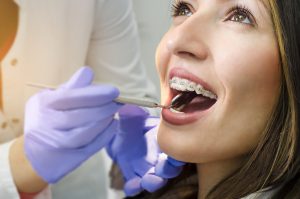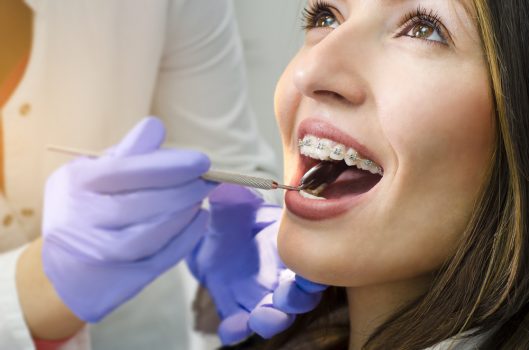It deals with the analysis, prevention, and correction of malpositioned teeth and the jaws. Cooked teeth and the teeth which are not in a proper shape make it tough to clean and thus may face tooth decay and other periodontal diseases. They also cause extra stress on chewing muscles which may cause headaches, TMJ syndrome and pain in neck, shoulder, and back. They also disrupt the appearance of a smile.
Fields in which orthodontic treatment can help
- Underbite: In this case, lower teeth are too far forward, or upper teeth may be far backward. They give a bulldog appearance.
- Crossbite: If the upper teeth do not come down slightly in front of the lower teeth in case of biting
- Open bite: Space is left between the biting surfaces and of the side teeth when the person tries to chew.
- Misplaced midline: If the center of the upper front teeth is not aligned with the lower front teeth.
- Spacing: Spaces may be left in the mouth due to loss of teeth due to some or other reasons, or teeth formation may be such that gaps may be left.
- Crowding: Too many teeth may grow, and the ridge finds it problematic to accommodate them.
Procedures involved in orthodontic treatment

- Braces: These are the devices used in orthodontics which have the capability of aligning and straightening the teeth, helping them to position themselves. They can improve a person’s bite and also aim to improve dental health. Braces can be useful in correcting conditions like an underbite, malocclusion, overbite, open bite, deep bite, crossbite, crooked teeth and any other structural flaw in the teeth and the jaw. Braces can be mainly divided into two categories- cosmetic and structural. They can be used along with other orthodontic appliances to widen the palate or jaws and also help in shaping the teeth and the jaws.
- Fixed space maintainers: In case of the loss of a baby tooth in a premature stage, a space maintainer may be used to keep the space open until the permanent tooth comes out. It is attached to a band to the tooth present alongside the empty place and a wire which is stretched to the other side of the space.
- Especially fixed appliances: These are used to control thumb sucking or tongue thrusting in babies.
- Invisalign: Invisalign also called clear aligners are orthodontic devices that use incremental transparent aligners to adjust teeth. They are used as an alternative to dental braces. Invisalign uses clear plastic aligners, and thus no one could know that they are there. They, unlike the braces, can be removed while eating, drinking and brushing.
Clear elastic ties and white metal ties are used with these braces so that they are difficult to see. They may also be of a self-ligating type. These have higher friction with the teeth and are also more brittle than metal braces. Thus, sometimes removal of the braces at the end of the treatment becomes more difficult and also time taking.
These are also recommended for ongoing use after the completion of the orthodontic treatment. They can help to maintain the wanted and accomplished results until the teeth have settled and stopped moving.
- Jaw repositioning appliances: These are also called splints and are worn either on the top jaw or the lower one and thus train the jaw to close in a more favorable manner. These may be used for TMJ.
- Lip and cheek bumpers: They keep the lips and cheeks away from the teeth to relieve the pressure caused by lips and cheek muscles on the teeth.
- Palatal expander: These are devices used to widen the upper jaw arch. A plastic plate fits on the roof of the mouth, and outward pressure is applied to the plate by screws. Screws make the joints in the bones of the palate to expose lengthwise, widening the palatal area.
- Headgear: In this, a strap is placed around the neck of the head and then attached to a metal wire in front, or in the face bow. This device is instrumental in slowing the growth of the upper jaw and holds the back teeth at their place pulling back the front ones. This device can cure overbites.
Related Article: Invisalign A Better Replacement For Dental Braces
Dr. Paul Kim, a Torrance Dentist, says that orthodontic treatments, if done correctly is hugely beneficial and without any side effects can help create healthy teeth and give a beautiful smile. It helps cure the malpositioning of the teeth and the jaw.
References:
- https://en.wikipedia.org/wiki/Orthodontics
- http://dryoungperiodontics.com/orthodontics-and-periodontal-disease/
- http://dreamdental.us/orthodontics/

